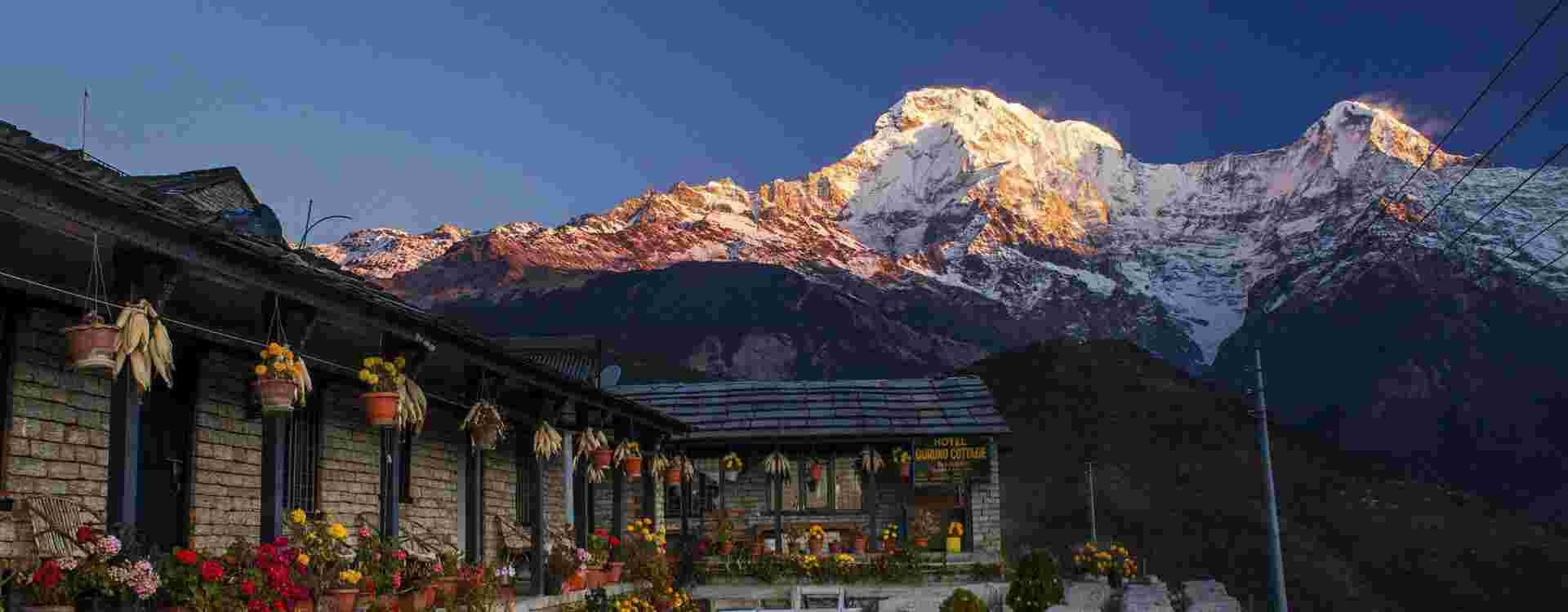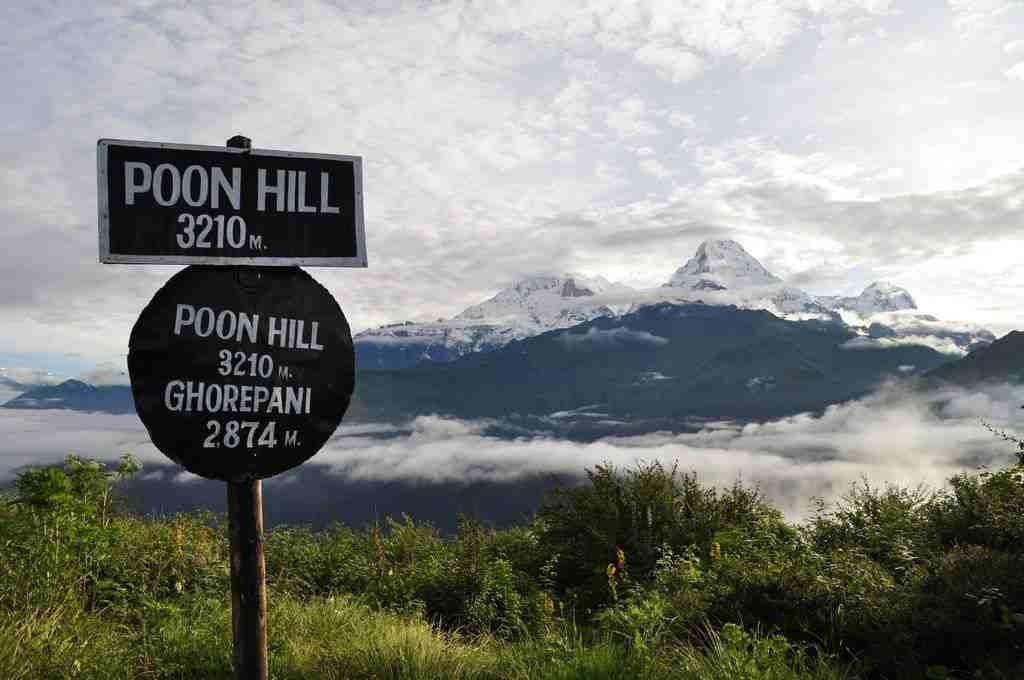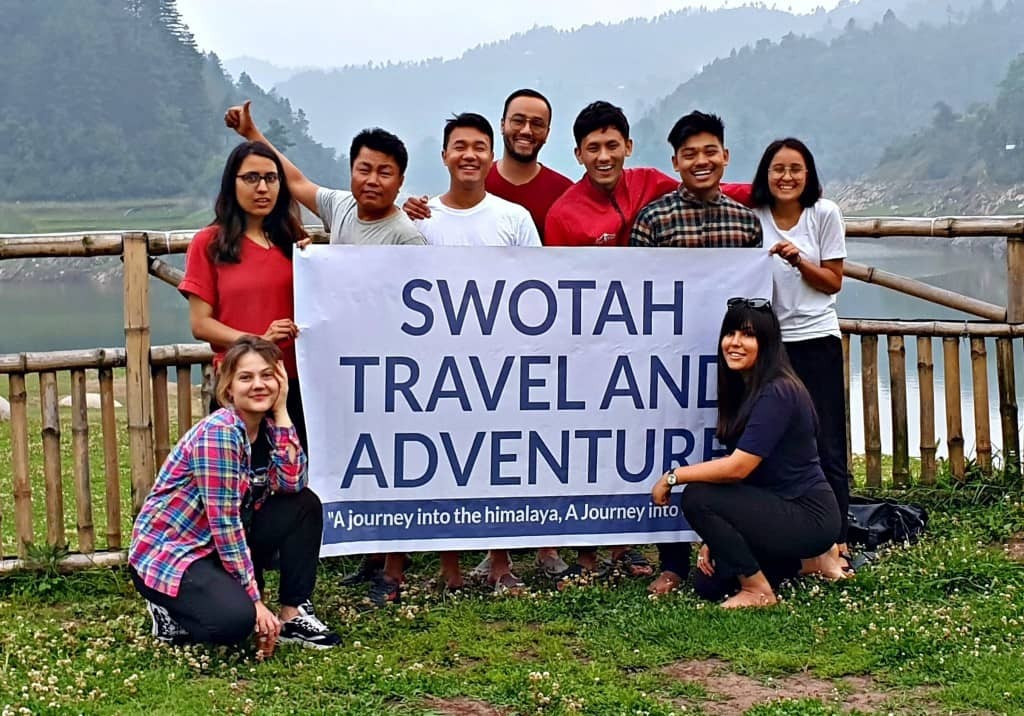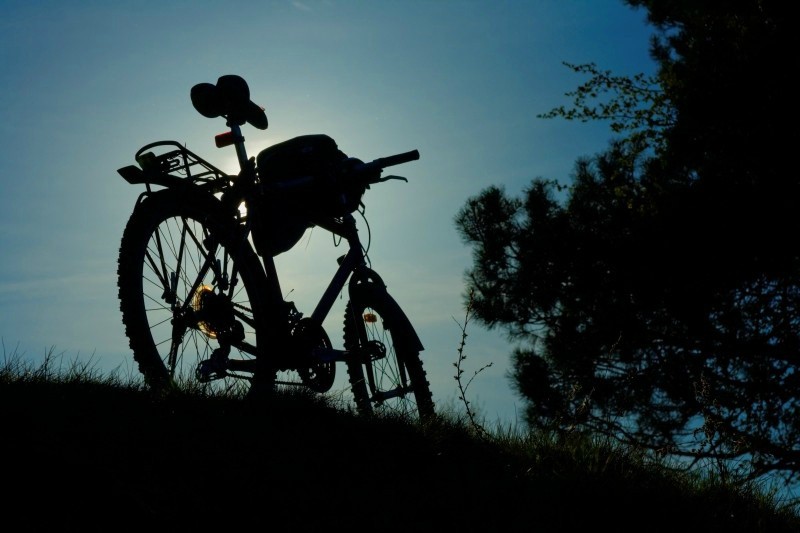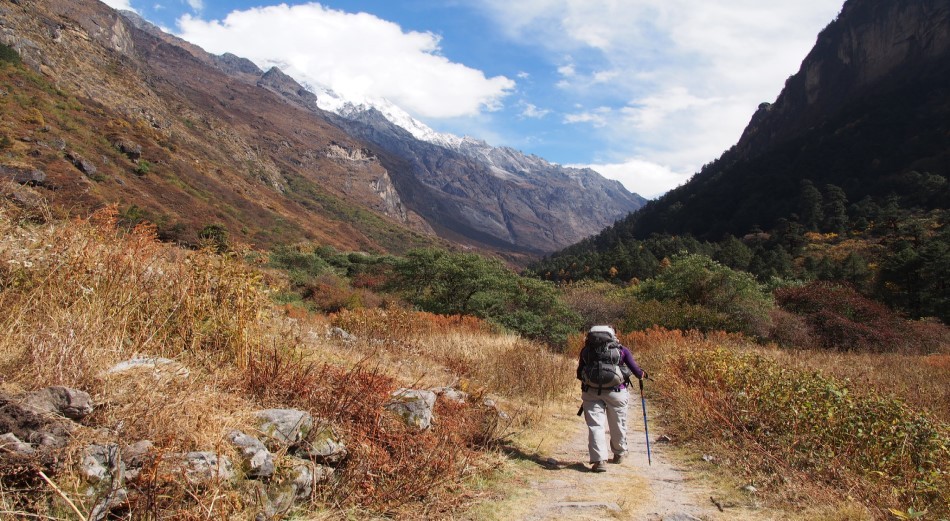
A Complete Guide to Trekking in Nepal

A Complete Guide to Trekking in Nepal
Kanti Khadka
6771
26, 02 2020
Nepal is a tiny landlocked country with mountains on almost every backdrop. Nepal is a complete package of passages, off the beaten tracks, and a journey into another world and time, for which you’d need to be extremely fit to tackle it. Part of the appeal in this tiny country is the 14 mountain peaks which are above 8,000 meters, and several climbing peaks, that are above 6000 meters.
Actually, there are plenty of options to trek in Nepal solo, in a tour group, or with your family. Is Budget an issue for you? Just steer clear of the luxury options.
You can also simply search for the related tour packages on our Website to get detailed information about costs and itineraries
Best Time to Trek in Nepal
In fact, you can trek in Nepal all year, however, most trekkers pick between the two major trekking periods of fall and spring. On the off chance that it's your first time trekking in Nepal, we suggest visiting during one of these peak seasons. The path will be extensively packed, yet the advantages will generally be justified, despite all the trouble.
Fall (October - November): This is the most mainstream trekking season in Nepal. During this time you'll have the most obvious opportunity for clear mountains, bright skies, gentle temperatures, and perfect weather window. The drawback is that you'll be offering the path to crowds of sightseers and teahouses will knock, particularly along the most mainstream trails.
Some popular treks in this season include:
- Everest base camp trek
- Annapurna circuit trek
- Langtang valley trek
- Manaslu trek
- Mustang
- Manang
- Dolpo
Spring (March - April): Spring is the second most well-known season to trek in Nepal. As the snowpack softens on high mountain passes, rhododendron trees blossom over the slopes of Nepal. Temperatures are commonly mellow this season and it's a decent time to view natural life as well. The two fundamental drawbacks to spring climbing are the occupied path and the probability of dim skies, which can cloud mountain sees. So, dim skies will, in general, be less of an issue as you move in height.
Trekking trails perfect for this season are:
- Annapurna region
- Everest region
- Langtang region
- Kanchenjunga trekking
Off-Peak Season
Trekking outside the peak seasons in Nepal can also be compensating. Isolation is simpler to discover, costs are less expensive, and you can get to know local people easily. All things considered, there are noteworthy drawbacks to trekking outside the pinnacle seasons in Nepal, so don't be too high handed when picking your trekking dates.
Experienced winter trekkers (December - February) can discover bright days and splendid mountains during this season. All things considered, temperatures can be unpleasant cold, sunlight hours are shorter, and unforgiving winter can upset sightseeing plans with small notice. Likewise, numerous mainstream trails won't be open during this season because of substantial snowfall at high heights.
Some of the places you can trek in this season are:
- Ghandruk Ghorepani Trek
- Namche Bazaar Trek
- Kyangjin Gompa Trek
- The Annapurna Base camp trek
- Chisapani Nagarkot Trek
Trekking during monsoon months (May - September) isn't typically opted for. During monsoon, downpours bring landslides and floods in Nepal. It makes mountain travel extremely troublesome (if not hazardous) and the last is simply gross and unpleasant. The climate can likewise be hot and humid this season and the mountains are frequently covered in clouds.
Trekking Solo or With a Guide
If a particular trek requires a guide there really is no way around it, you must use a guide and porter in order to undertake the hike.
Guided Trekking Pros
- All carriers organized(bus, plane, jeep, etc.)
- You don't have to worry much about lodging, route, schedule, etc.
- The safety and guidance while trekking
- Regional details on religion, culture, food, etc.
- All pre-trip works handled (permits, fees, etc.)
Independent Trekking Pros
- It can be much less costly
- trek on your own schedule
- More direct interaction with villagers
- You get more choices on places to stay and eat(although guides know the best spot)
- You don't have to deal with groups, it will be just the route and you.
Guide and Porter in Nepal
Your guide is a good source of information on local culture, customs, festivals, and norms. The guides can be your lifelong friend as well as they are a useful source of information on the trail. Porters have an absolutely backbreaking job, so please don’t make it any harder on them.
Guides and porters are very common in Nepal (though not always mandatory) and the prices are quite competitive. Generally, the porter costs around $10-$15 per day and the guide will cost around $25-$30. As the porter will carry your heavy gear, you only have to trek with your small daypack.
Group or solo Trekking in Nepal
As most trekking agencies offer group packages for popular trails, there may be disadvantages in traveling in a large group, so make sure you know what you’re getting into before signing up. Many trekkers prefer hiking in small groups or with a personal guide.
Difficulty While Trekking in Nepal
Practically, five factors affect the difficulty level of a destination.
- The total duration of the trek.
- The duration of stay at high altitude (+3000m).
- The maximum difference in altitude per day.
- The condition of the terrain.
- The average duration of the daily stages.
- Range of extreme temperature
The statistical-based classification of treks according to the difficulty ranges are given below:
Easy
Easy treks are the treks that require 6-7 hrs of walking on an average and are below 4000 meters fall under this category. Such treks can be easily completed by an averagely fit person. These treks mostly extend up to 7-16 days.
Moderate
These include difficult treks. The trails can be rough and it needs you to be fit. You are requested no to participate in case you suffer from asthma, high blood pressure, heart disease or any other such complicated medical condition. The journey mostly lasts for 20 days or more and the altitude rises above 5000 meters.
Strenuous
These trails are extremely demanding. Most of them are in restricted areas. The area may be composed of high terrain. The altitude can rise up to 6,461m/21,192ft. You should have a basic knowledge of mountaineering. They should be familiar with the use of crampons and ice axes. You will need your medical certificate to be accepted on any climbing treks.
Trekking With Local Agency
It is better to contact reliable agencies for the trekking holidays if you are planning to trek in Nepal. You will be provided with experienced porters and professional guides to carry your goods and to make necessary arrangements such as food, accommodation, flights, ground transfers, and paper works for you.
If you are having trouble choosing the right local agency for your trek, here take help from our blog on choosing the right tour operators in Nepal.
Food While Trekking in Nepal
The meal selections in teahouses are often basic yet adequate. The Dal Bhat is a filling and delightful mainstay on the menus of the majority of teahouses, which are generally comparable. Along with these foods, rice dishes, soups, pizzas, momos (dumplings), spaghetti, and in a few locations, yak steak and apple pie, are also frequently served. A warm, home-cooked lunch is usually a welcome reward after a hard day of hiking.
Even though teahouse menus are consistently the same, costs rise as you get further from cities. The majority of goods must be transported by yak or donkey to outlying areas, which drives up the cost of food supplies. When walking between villages or on long trekking days, it's also a good idea to bring snacks.
Note: If you book a trip through a trekking agency, make sure to talk about food costs earlier. Most companies will give you two options:
1) Your trek package will cover all food costs on your trip or
2) You pay for meals as you go.
The first option is easier because you don’t have to hike with lots of cash and handle money throughout the day. The second option can be much cheaper, as you’ll only pay for exactly what you order.
Water
It’s important to use a water treatment plan before you trek in Nepal. Water is usually easily accessible, but you should purify it first for safety. There are several water treatment options such as water treatment pills, UV sterilizers, and water filters. Bottled water is easily accessible at the teahouses, but considering ethical tourism this option is an eco-unfriendly strategy that will greatly increase cost and waste during your trip.
Know More About Ethical Trekking
While trekking, it is highly recommended to carry at least 1-2 liters of water most preferable a reusable water bottle which can be filled up often. Remaining adequately hydrated is essential while trekking, and it becomes increasingly important as you head toward higher elevation in order to avoid altitude sickness.
Accommodation While Trekking in Nepal
There are several accommodation choices available while trekking in Nepal. Among them Tea houses are the most popular thus, trekking in Nepal is also known as Teahouse trekking. Tea houses provide accommodation along the popular trails. They are the small mountain lodges.
On almost all the trails in the Everest, Annapurna, Manaslu, and Langtang regions you are most likely to pass a teahouse every hour or two. These accommodation facilities are a great place to eat a home-cooked meal, meet other travelers, warm your toes by the fire, and rest for the night.
On a teahouse trek in Nepal, you will sleep in one of these lodges every night including every meal. Accommodations are usually simple, comfortable, and very affordable. Most tea houses are cheap and cost around $3-5 per night and can be booked upon arrival. The one and only major practice while staying in a teahouse are that you are expected to eat meals wherever you stay. Snacks, candy, hot showers, beer, and sometimes even halfway decent Wi-Fi are available in a Teahouse.
For those intending to hike in Nepal’s more remote areas, camping treks are arranged through most trekking agencies in Kathmandu. This option adds cost and complexity but could lead to a unique and rewarding trek. Mostly camping treks are not that popular, furthermore, camping won’t be necessary on any teahouse trekking route. But Depending upon the trek package, trekking and camping can be combined.
Popular Trekking Routes in Nepal
There are hundreds of trekking routes in Nepal each equally unique and mesmerizing. It would be impossible to list all the trails in Nepal. Instead, here is a list of a few most popular trekking destinations in Nepal. Teahouse trekking routes in Nepal are all exceptional hikes and a great place to begin your first foray into the trekking world.
Everest Base Camp
14-16 Days
Difficulty: Moderate to Difficult
Best Time: March-April & October-November
Everest Three High Passes
18-20 days
Difficulty: Difficult
Best Time: March-April & October-November
Annapurna Circuit
12-16 Days
Difficulty: Moderate to Difficult
Best Time: March-April & October-November
Annapurna Base Camp
7-10 Days
Difficulty: Moderate
Best Time: March-April & October-November
Langtang Valley
7-9 Days
Difficulty: Moderate
Best Time: March-April & October-November
Manaslu Circuit
16-18 Days
Difficulty: Moderate to Difficult
Best Time: March-April & October-November
Gokyo Lakes
10-12 Days
Difficulty: Moderate to Difficult
Best Time: March-April & October-November
Upper Mustang
10-12 Days
Difficulty: Moderate to Difficult
Best Time: May-October
Poon Hill
4-5 Days
Difficulty: Easy to Moderate
Best Time: March-April & October-November
Permits Required While Trekking in Nepal
The following permits are required to trek in Nepal. You will need to provide various documents, including proof of travel insurance, a photocopy of your passport and two passport-sized photos.
(1). Trekkers’ Information Management System (TIMS) permit– designed so Nepal's government can keep a record of trekkers and respond to emergencies.
(2). National Park permits – for trekking in 12 various national parks in Nepal, including Sagarmatha, Makalu, and Langtang National Parks.
(3). Conservation Area permits – for trekking in six different conservation areas, including the Annapurna, Kanchenjunga, and Manaslu Conservation Areas.
(4). Restricted Area Permits (RAP) – It is compulsory to have a trekking guide to trek these areas which includes the remote area of upper dolpa, mustang and Manaslu.
Take a look at the full list of fees for the Conservation area and National park permits in Nepal.
Travel Insurance
It is highly recommended to purchase travel insurance if you plan to trek in Nepal. In fact, one mustn't trek in Nepal without it. Most trekking locations in Nepal are very remote, so if something goes wrong, it’s likely you will need emergency evacuation, and in the absence of Travel insurance, it can get insanely expensive.
You must buy a plan that will cover high-altitude trekking and helicopter evacuation in Nepal while choosing travel insurance. World Nomads are famous for travel insurance. Their coverage is excellent, and the rates are reasonable; the communication with them is easy.
Post-Earthquake conditions
Most of the trails have been fully repaired, while some signs of devastation are still there. The accommodations are plentiful as well as safe along popular routes.
Transportation
After landing at TIA, many visitors like to go sightseeing in Kathmandu valley after having rest and plan for the trek and making last-minute hiking preparation. Generally, transportation around Nepal is a little slow. There may be unexpected delays, canceled flights, and long bus rides. So, make sure to have some buffer days for yourself while planning the trip and embrace the adventure.
Things to Consider while Trekking in Nepal
While trekking in the Himalayas, many things are necessary to take care. Some of them are as follows:
Health Care
Drink plenty of water. Plenty of water avoids becoming dehydrated. Take care of your health. If you walk fast and gain high altitude fast, then you will be the sickness of altitude. So walk gently and take acclimatization time.
Don’t eat meat items more. You may feel uncomfortable with digestion. It’s better to eat fresh and healthy food during the trek. Reduce alcoholic drinks. Arrange the first aid box with basic medicine. Keep the bandage and some tablets with you in case you have a headache or injury during the trek.
Personal Belongings
Your personal goods must be well taken care of. Keep your belongings with you. Try to make your backpack light. You must have some common things like personal hygiene goods, lights, chargers, cameras, umbrellas, rain jackets, hiking boots, walking boots, sleeping bag, poles, and lightweight bag. So be smart, keep a few things, and necessary things.
Emergency Support and Contact
During your trekking holiday, if you have a problem with health and accidental case. In these conditions, you will need emergency support. So, be prepared on whom to contact, and how to contact, before you start trekking. Emergency helicopter rescue is compulsory in case of emergency while trekking in high altitude.
Remember Swotah Travel and Adventure for your trekking and tour partner.
NEWSLETTER SIGNUP
Sign up to receive our trip ideas and travel offers!
Get updates and Exclusive Offers up to 20% Discount

